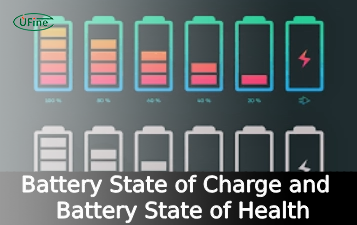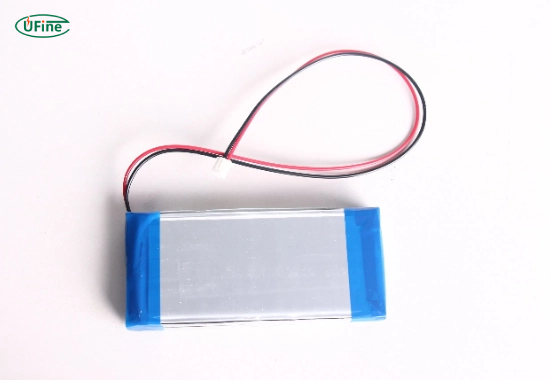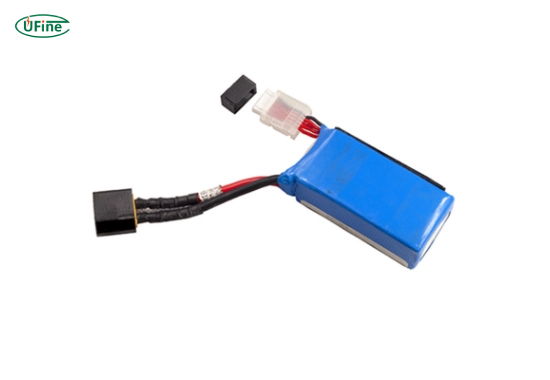
- Part 1. What is a 4S LiPo battery?
- Part 2. What is the full voltage of a 4S LiPo battery?
- Part 3. What is the nominal voltage of a 4S LiPo battery?
- Part 4. What is the storage voltage of a 4S LiPo battery?
- Part 5. What is the cutoff voltage of a 4S LiPo battery?
- Part 6. 4S LiPo battery voltage chart (0% to 100%)
- Part 7. How does temperature affect 4S LiPo battery voltage?
- Part 8. How to balance charge a 4S LiPo battery correctly?
- Part 9. How to interpret 4S LiPo battery telemetry data
- Part 10. Signs your 4S LiPo battery is failing
- Part 11. FAQs about 4S LiPo battery voltage-related questions
What is the 4S LiPo battery voltage chart and why should you care?
The 4S LiPo battery voltage chart is a critical reference tool for anyone using lithium polymer batteries in electronics, drones, RC cars, or FPV systems. It provides essential data about the battery’s voltage levels at different states—fully charged, nominal (average), storage-safe, and the minimum cutoff point.
Understanding these values is not optional. It’s the difference between safe, efficient use and damaging your battery or equipment. In this in-depth guide, we’ll explore every voltage stage in simple terms, provide expert charts, and explain how to apply this knowledge in real-world situations.
Part 1. What is a 4S LiPo battery?
A 4S LiPo battery is a lithium polymer battery made up of four cells connected in series. Each cell has a nominal voltage of 3.7V, so the nominal voltage for the entire pack is 14.8V.
Here’s what the term “4S” breaks down to:
- 4: Four individual battery cells
- S: “Series” — meaning the voltages of the cells add up
These batteries are lightweight, highly efficient, and capable of delivering high current, making them ideal for:
- Racing drones
- Remote control cars and planes
- FPV flight systems
- Robotics and DIY electronics
Part 2. What is the full voltage of a 4S LiPo battery?
The full voltage of a 4S LiPo battery is 16.8 volts. This means each of the four cells has been charged to 4.2 volts, which is the maximum safe voltage per cell.
⚠️ Important:
- Charging beyond 4.2V per cell can be dangerous.
- It increases the risk of overheating, swelling, and even fire.
Always ensure that your charger is set to LiPo mode and is configured correctly for 4S (4-cell) packs.
Part 3. What is the nominal voltage of a 4S LiPo battery?
The nominal voltage is a reference voltage used to describe the average working voltage of a LiPo battery.
- Per cell: 3.7V
- 4S total: 14.8V
This value is used in naming and labeling batteries. For example, a battery labeled “4S 14.8V 1500mAh” is a 4-cell LiPo with a nominal total voltage of 14.8V.
This is not the voltage you’ll see while flying or using the battery, but rather a baseline value used for classification.
Part 4. What is the storage voltage of a 4S LiPo battery?
Storage voltage is the ideal battery level for long-term storage. If you won’t use your LiPo for more than a week, you should store it at:
- 3.85V per cell
- 15.4V total for a 4S pack
Why is storage voltage important?
- Storing a battery fully charged or fully discharged causes chemical breakdown.
- It shortens the battery’s lifespan, can cause swelling, and reduce performance.
Most smart chargers offer a “Storage Mode” that automatically charges or discharges the battery to this safe level.
Part 5. What is the cutoff voltage of a 4S LiPo battery?
The cutoff voltage is the lowest safe limit for a LiPo battery during use. Going below this voltage can cause permanent damage to the cells.
- Safe minimum per cell: 3.3V
- Absolute minimum per cell: 3.0V
- 4S safe cutoff: 13.2V
- 4S hard cutoff: 12.0V (not recommended)
⚠️ Never discharge below 3.0V per cell.
Doing so can lead to:
- Lost capacity
- Inability to charge
- Swelling or internal damage
Use battery alarms, telemetry systems, or ESCs with voltage cutoff settings to stay safe.
Part 6. 4S LiPo battery voltage chart (0% to 100%)
Here’s a detailed voltage chart showing how total voltage corresponds to charge percentage for a 4S battery:
| State of Charge | Per Cell Voltage | Total Voltage (4S) |
|---|---|---|
| 100% | 4.20V | 16.8V |
| 95% | 4.15V | 16.6V |
| 90% | 4.11V | 16.44V |
| 85% | 4.08V | 16.32V |
| 80% | 4.03V | 16.12V |
| 75% | 3.99V | 15.96V |
| 70% | 3.96V | 15.84V |
| 65% | 3.91V | 15.64V |
| 60% | 3.88V | 15.52V |
| 55% | 3.85V | 15.4V (Storage) |
| 50% | 3.82V | 15.28V |
| 45% | 3.79V | 15.16V |
| 40% | 3.75V | 15.0V |
| 30% | 3.70V | 14.8V |
| 20% | 3.60V | 14.4V |
| 10% | 3.50V | 14.0V |
| 0% | 3.30V | 13.2V (Cutoff) |
Use this chart during flight or operation to monitor battery health and prevent power drops.
Part 7. How does temperature affect 4S LiPo battery voltage?
Temperature has a major impact on LiPo performance and voltage readings:
- Cold temperatures reduce voltage and capacity. Your battery may appear to be empty even if it’s not.
- Hot temperatures can cause voltage sag and permanent damage.
Best practices:
- Operate between 20°C and 40°C
- Warm up your battery if it’s cold before charging or using
- Avoid leaving it in direct sunlight
Part 8. How to balance charge a 4S LiPo battery correctly?
Balance charging ensures that each cell reaches the same voltage during charging.
Steps to balance charge:
- Connect both main lead and balance plug to the charger.
- Select 4S and LiPo Balance Mode.
- Set the correct charge rate (Example: 1.5A for a 1500mAh battery).
- Monitor progress and cell voltages.
Balanced cells = better performance and longer life.
Part 9. How to interpret 4S LiPo battery telemetry data
If your drone or RC system supports telemetry, you can monitor:
- Total voltage
- Per cell voltage
- Voltage sag under load
- Real-time capacity usage
What to look for:
- If voltage drops below 14.0V quickly, the battery may be weak.
- Imbalanced cells during flight may indicate cell degradation.
- Always land when the voltage reaches 13.6V to 13.2V.
Part 10. Signs your 4S LiPo battery is failing
Watch for these signs:
- Puffed or swollen pack
- Unbalanced cells after charging
- Significant voltage sag under load
- Cannot reach full charge (16.8V)
- Heating during normal use
If you notice any of these, it’s time to retire the battery safely.
Part 11. FAQs about 4S LiPo battery voltage-related questions
What is the ideal landing voltage for a 4S LiPo during flight?
You should aim to land when your total voltage drops to 13.6V to 13.2V. This keeps the battery within safe limits and prevents over-discharge.
Why does my 4S LiPo battery show 14.8V but drains quickly?
This could mean the battery is only at nominal voltage, not fully charged. It may also be aged or damaged, reducing its effective capacity.
Can I charge a 4S LiPo to only 4.1V per cell to extend life?
Yes. Charging to 4.1V per cell (16.4V total) reduces stress and can extend cycle life, although you lose a bit of runtime.
How do I check if my 4S LiPo cells are balanced?
Use a smart charger or a LiPo checker. Each cell should be within ±0.05V of each other. Differences larger than this may require balancing or indicate a bad cell.
What does it mean if one cell in my 4S battery is lower than the others?
An unbalanced or weakened cell can cause:
- Voltage sag
- Shorter flight time
- Risk of over-discharge
It may be time to retire the battery or use a balance cycle to attempt recovery.
Related Tags:
More Articles

Battery State of Charge and Battery State of Health
Battery SoC vs. SoH explained: Learn professional methods to measure charge levels, test health status, and optimize battery performance for longer lifespan.
Difference Between 18650, 26650, and 21700 Batteries
What’s the difference between 18650, 21700, and 26650 batteries? Compare size, capacity, and performance to find the best lithium battery for your device.
LFP Battery Vs. LTO Battery: A Detailed Comparison
Compare LFP (LiFePO4) and LTO (Lithium Titanate) batteries by energy density, lifespan, safety, cost, and uses in EVs, solar storage, and backup power.
Compare 18650 battery types: Li-ion, LiFePO4, and LiPo. Key specs (voltage/capacity) and best uses for vapes, flashlights, EV batteries.
How to Distinguish Between Grade A, Grade B, and Grade C LiFePO4 cells?
Explore the differences between Grade A, B, and C LiFePO4 cells and learn how to choose the right one for electric vehicles, solar storage, or backup power.




